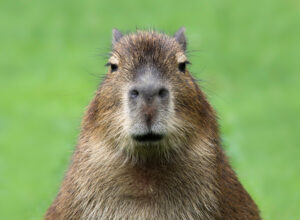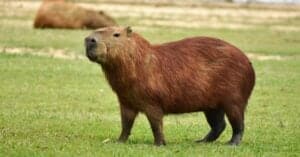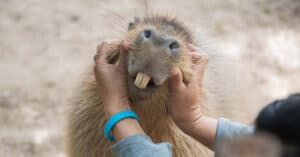Continue reading for our analysis...
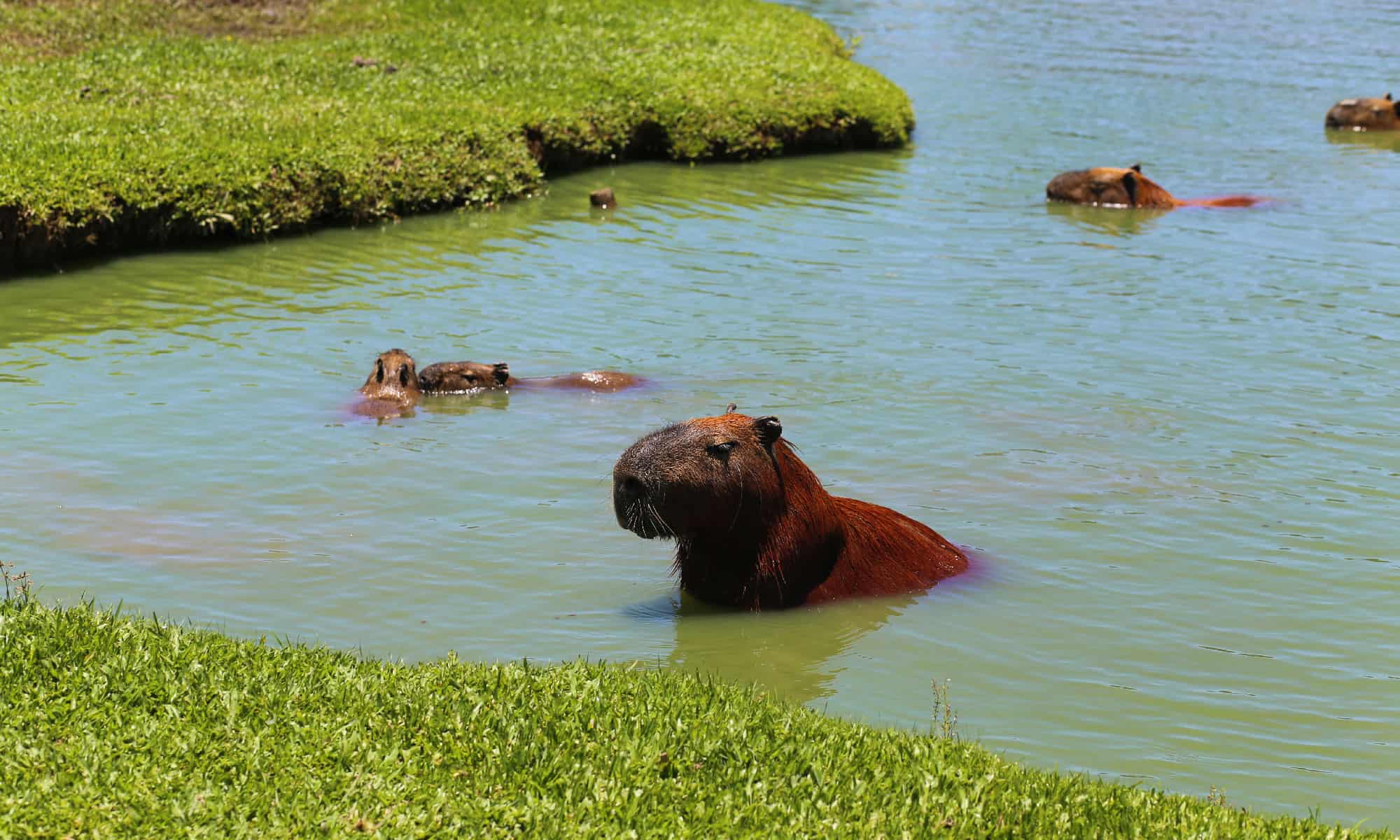
You just can’t take your eyes off this cute capybara riding a reptile down a river like it’s the most natural thing in the world. Capybaras are known for being very sociable, not just with their own kind but with lots of other species. As the video shows, that friendliness can spill over into a useful ride on the water too! Capybaras give each other rides in the water, so why not hop aboard a passing reptile?
What Are The Natural Predators Of Capybaras?
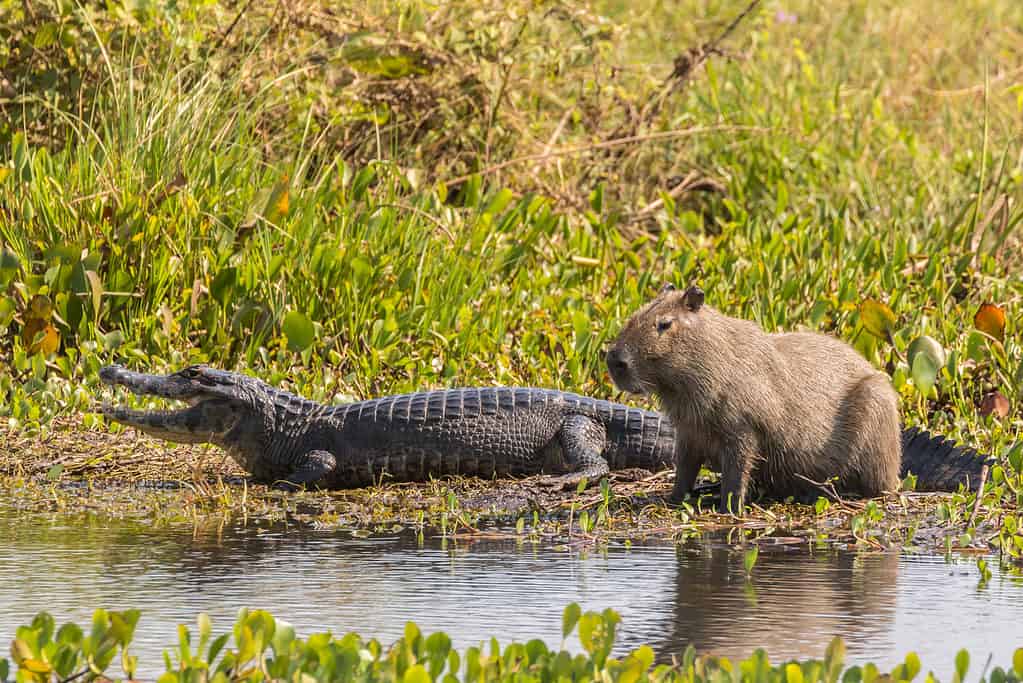
Capybaras really don’t pose any threat to anyone around them, so most animals just leave them be.
©Danita Delimont/Shutterstock.com
Is this even a safe thing for a capybara to do, considering the reptile it is riding is a carnivore, as is the one traveling behind? The jury is out on whether it is a crocodile, an alligator, or a caiman. Nevertheless, they are all quite capable of catching and eating a rodent!
Capybaras are semi-aquatic, which means that they spend most of their time near water. You will find them hanging out in forests, marshes, wetlands, grasslands, and savannahs, but they have to be close to water. This means that they are vulnerable to attack from both terrestrial and aquatic predators, yet there are surprisingly few animals that hunt them.
Young capybaras have most predators and can be targeted by foxes, and birds (including harpy eagles). Also, small cats like the ocelot and even snakes like the Boa constrictor. Fully grown capybaras can reach over 140 pounds making them the largest rodent in the world. Only big cats like the jaguar and puma and larger caimans can tackle them.
How Do Capybaras Typically Escape Danger?

Capybaras are comfortable in the water
©iStock.com/Yuina Takase
Capybaras are not nicknamed ‘water pigs’ for nothing. When faced with danger, they will typically flee into the murky water. Here, their brown coat helps to make sure that they are not seen. Also, because they can stay under the water for up to five minutes, many predators will give up and walk away. The capybara’s webbed feet also help it to make a hasty escape under the water.
When it does have to lift its head back above the water, it can be quite sneaky about it. Thanks to its eyes, ears, and nostrils being located at the top of its head, it can have a quick look for danger. Meanwhile, most of its head and all of its body remain under the water!
Is It Normal For Capybaras to Travel Alone?
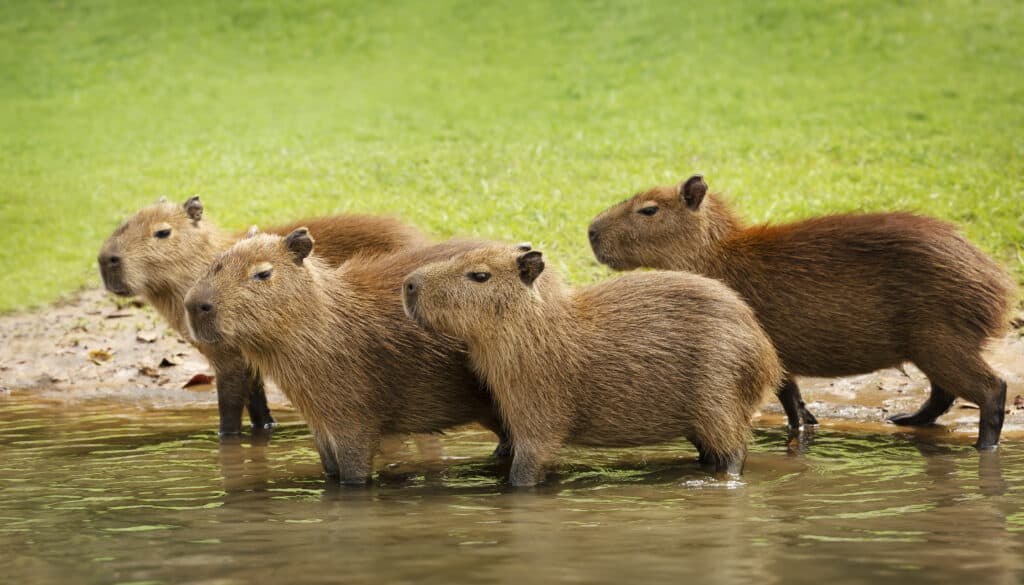
Capybaras live together in large groups of 10-20 members.
©Giedriius/Shutterstock.com
These semi-aquatic creatures, native to South America, are known for their social nature and tend to live in large groups called herds or colonies. Within these communities, capybaras engage in harmonious interactions such as grooming each other and vocalizing using a range of sounds, including whistles and purrs.
Their diet primarily consists of vegetation, making them herbivores with a preference for grasses, aquatic plants, and fruits. Capybaras spend a significant amount of time grazing on lush greenery near bodies of water or even partially submerging themselves to cool down during hot periods. Their digestive system is specialized for processing cellulose-rich plant matter efficiently.
Furthermore, capybaras display unique behaviors when it comes to dealing with potential threats. Despite their generally docile temperament towards humans, they can exhibit territorial aggression if provoked or feel their safety is compromised. In such situations, these remarkable animals can emit warning barks or even resort to biting if necessary.
How Large are Capybaras?
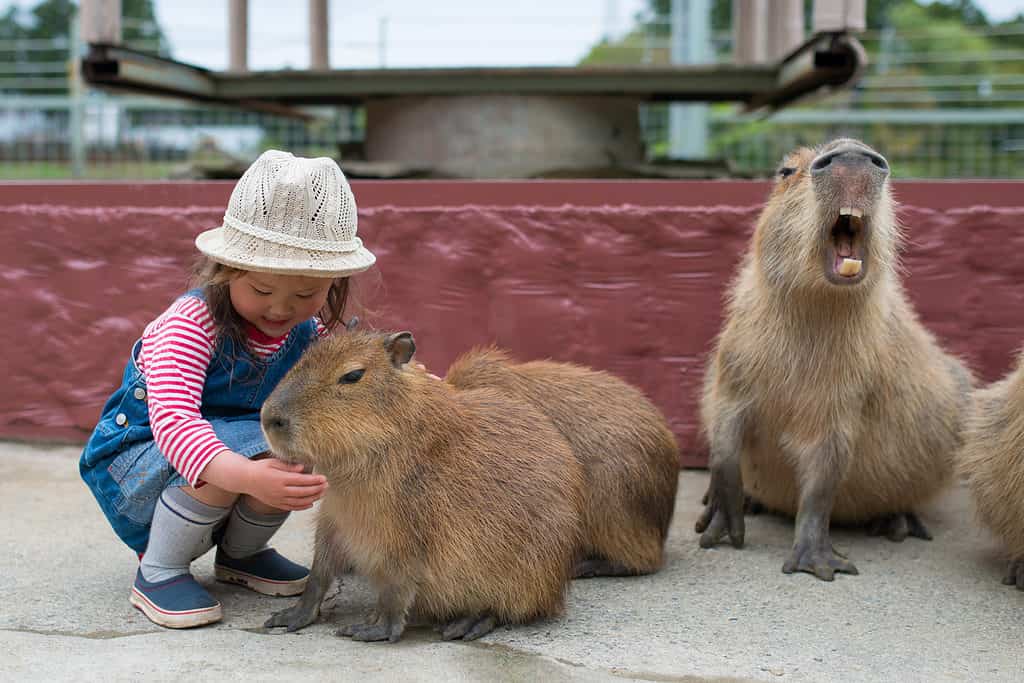
Capybaras are sweet and gentle creatures and as the largest rodents in the world, can be bigger than some dogs.
©Purino/Shutterstock.com
There are two species of capybara – the capybara (Hydrochoerus hydrochaeris) and the lesser capybara (Hydrochoerus isthmius). The capybara is the largest living rodent in the world and can grow up to lengths of 4.3 feet, while the lesser capybara is slightly smaller at around three feet. Females are larger than males and their weights range from 59 to 145 pounds.
Thank you for reading! Have some feedback for us? Contact the AZ Animals editorial team.



